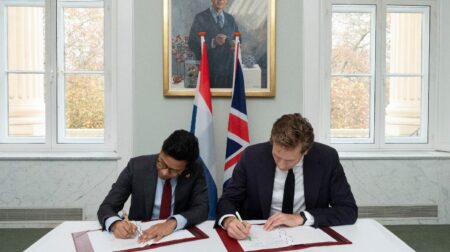Britain’s new ‘Trade Strategy’, published June 26, lays out a blueprint for rebuilding resilient advanced manufacturing and automation supply chains, aiming to futureproof the UK’s economy against global shocks.
The strategy commits to expanding the tools available for trade defence, addressing unfair trading practices, and tackling vulnerabilities in cross-border supply chains — issues that have dogged many robotics and automation businesses since the Covid-19 pandemic and Brexit.
A headline measure is the creation of a Supply Chains Centre, described as a hub to identify risks to essential manufacturing inputs and work with industry to mitigate vulnerabilities.
Alongside it, the Economic Security Advisory Service will advise on threats to strategic sectors, including advanced manufacturing and robotics, protecting them from disruptive geopolitical events or unfair trade practices such as dumping.
Critically, the strategy supports reshoring ambitions, recognising that high-end manufacturing depends on complex global supply chains that have become exposed to significant risk in recent years.
The document highlights the opportunity to anchor more robotics and automation supply chains within the UK, supported by expanded export credit capacity (£80bn through UKEF) and targeted SME finance through the Small Export Builder scheme.
Furthermore, the strategy prioritises high-growth sectors including advanced manufacturing, digital and technologies, and professional business services – all of which are closely tied to the robotics and automation community.
It explicitly names these sectors as trade priorities, with a commitment to negotiate more agile, targeted deals to unlock market opportunities sooner than traditional free trade agreements would allow.
Supporting this ambition, the government will pilot Digital Trade Corridors with European partners, leveraging digital documentation and streamlining customs processes.
These corridors could accelerate cross-border flows of robotics components and subassemblies while cutting costly delays at borders.
The strategy also places a premium on digital trade frameworks, aiming for mutual recognition of digital standards and improved protocols for e-commerce and data flows.
This could reduce friction for automation vendors delivering software-based solutions or remote maintenance services to international customers.
Additionally, the strategy reinforces commitments to the clean energy transition, acknowledging that robotics and automation will play a vital role in delivering more sustainable, energy-efficient systems.
By aligning trade policy with green growth, it could boost UK-based robotics suppliers who support offshore wind, grid technology, EV charging or hydrogen infrastructure.
Make UK’s CEO Stephen Phipson described the government’s Trade Strategy as “joined-up thinking” and praised its potential to help manufacturers “optimise market access and boost exports, particularly for SMEs”.
However, he urged ministers to ensure that measures such as customs simplification, cross-border skills recognition and practical implementation of trade corridors are delivered without delay.
In parallel, Logistics UK highlighted the importance of digitised borders, reduced bureaucracy and interoperable customs IT systems to support reliable supply flows for robotics and automation equipment.
Innovative applications of technology in retail and e-commerce, healthcare and pharmaceuticals, food and beverage, automotive, transport & logistics, and more will be celebrated at the Robotics & Automation Awards on 29 October 2025 at De Vere Grand Connaught Rooms in London. Visit www.roboticsandautomationawards.co.uk to learn more about this unmissable event for the UK’s robotics and automation sectors!








